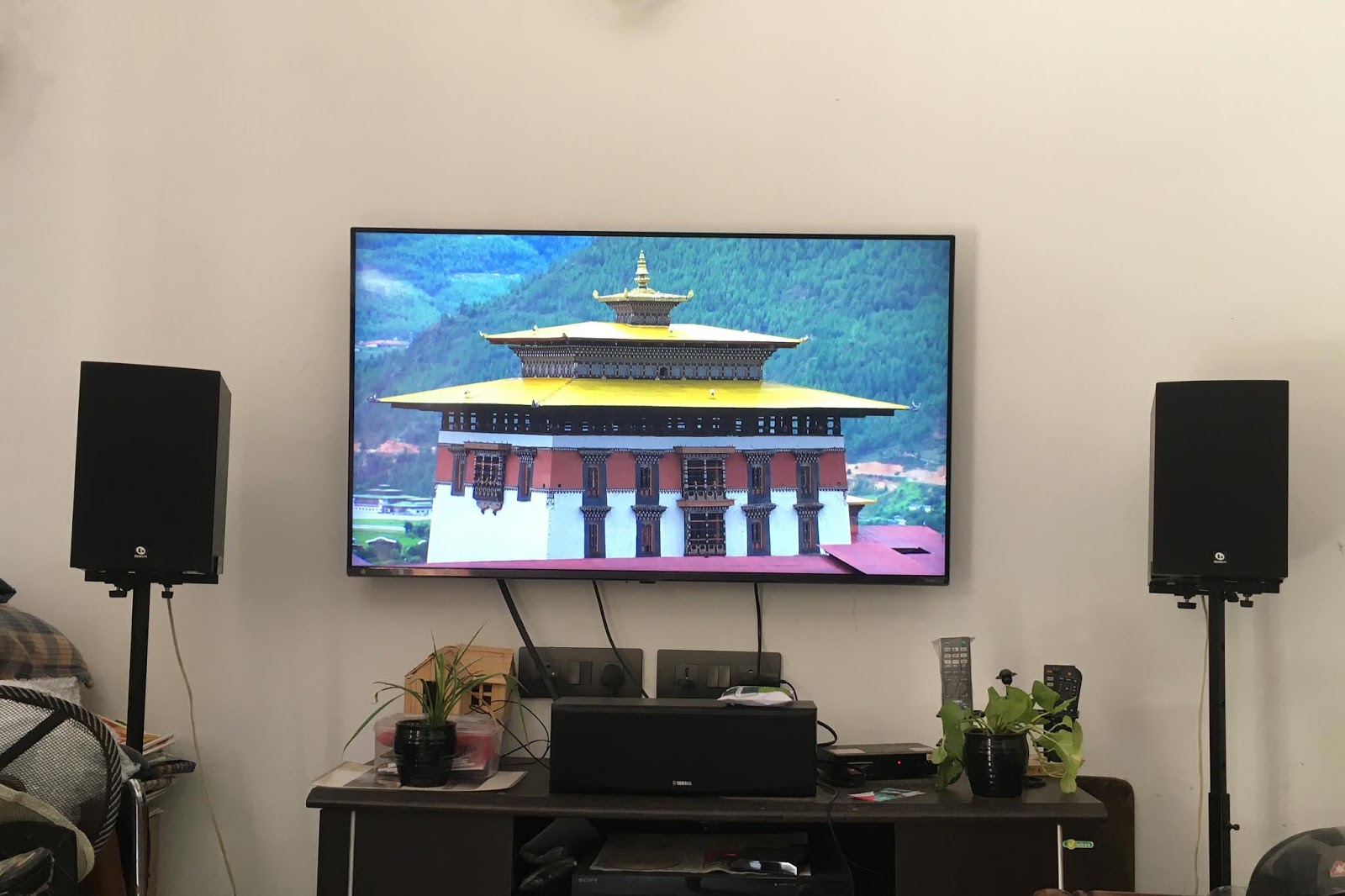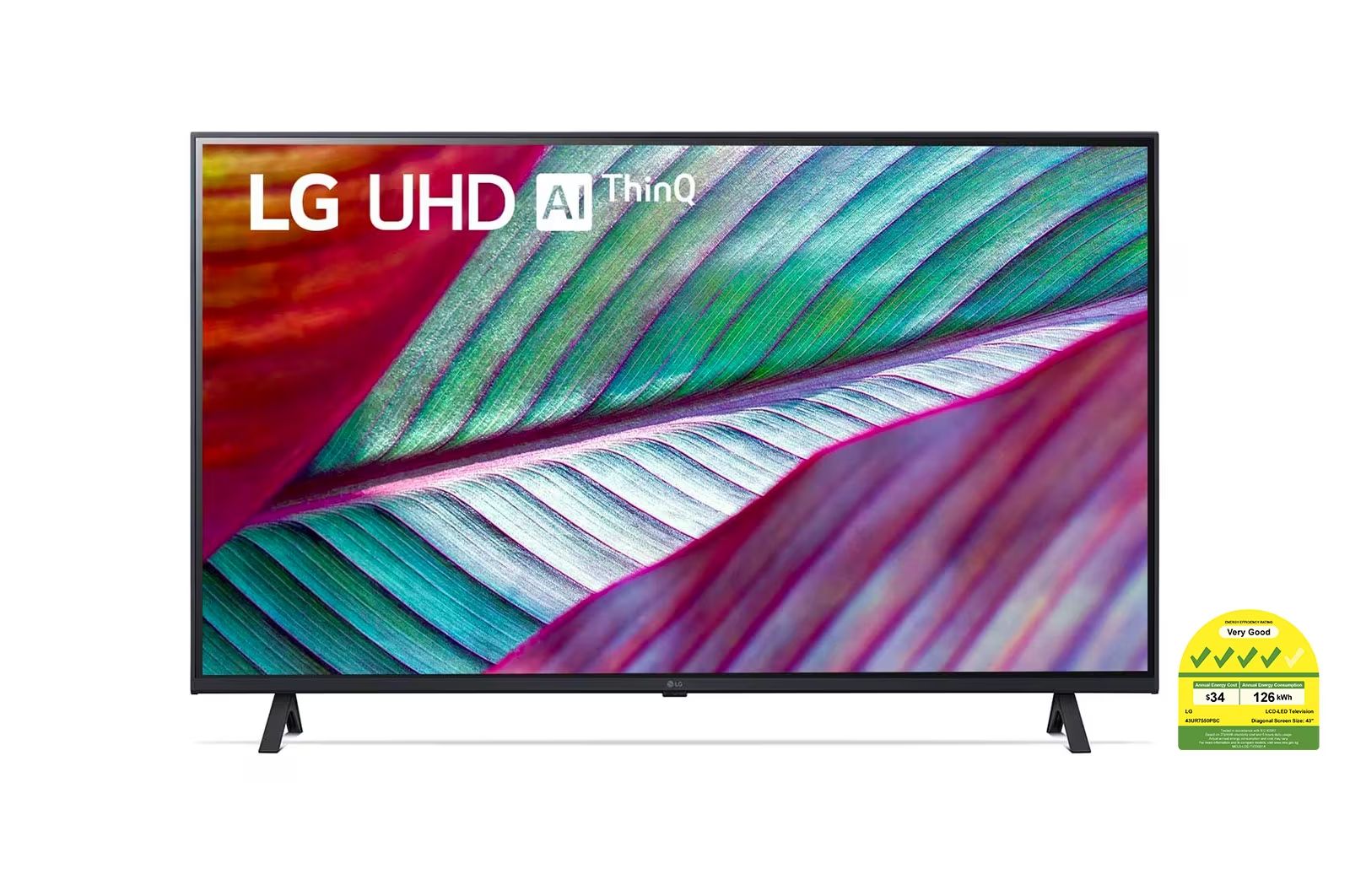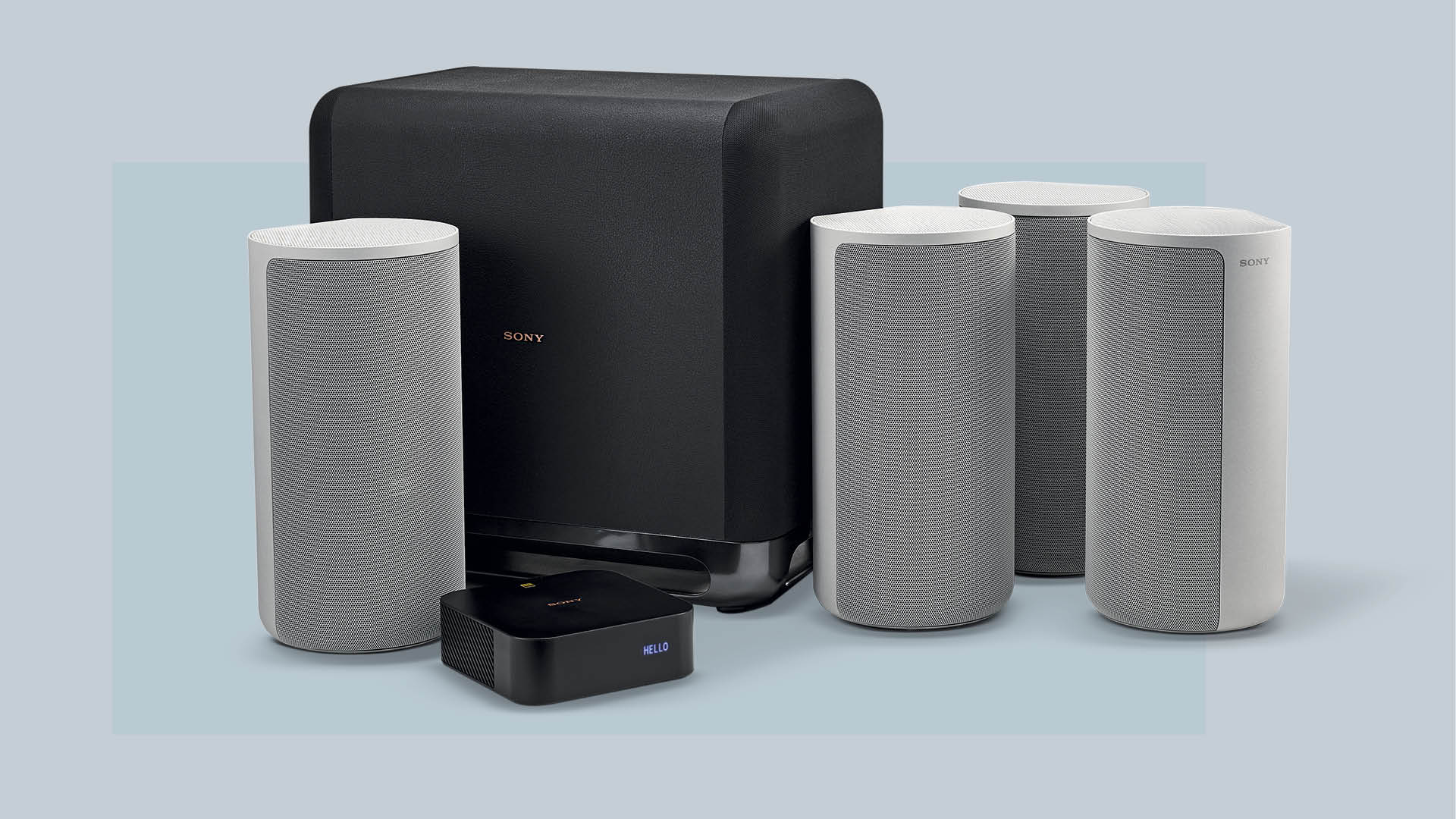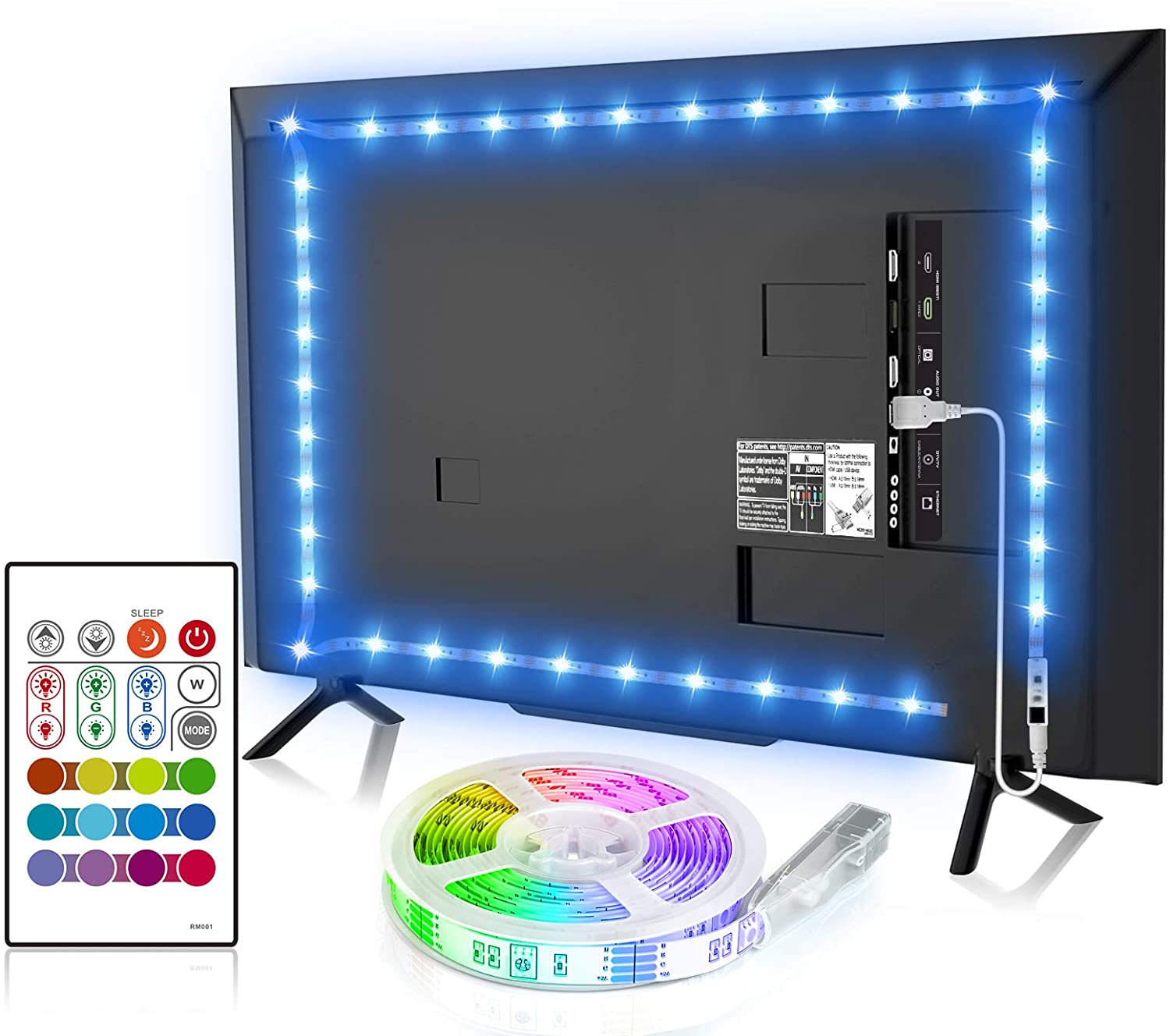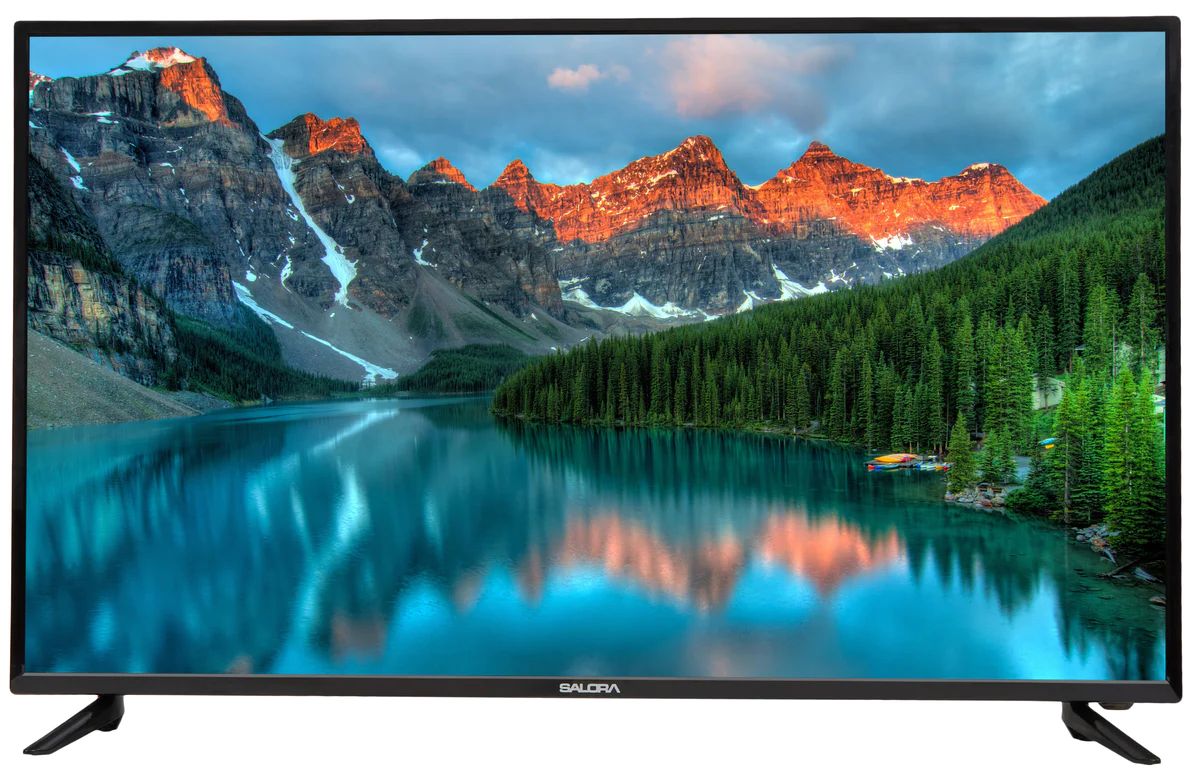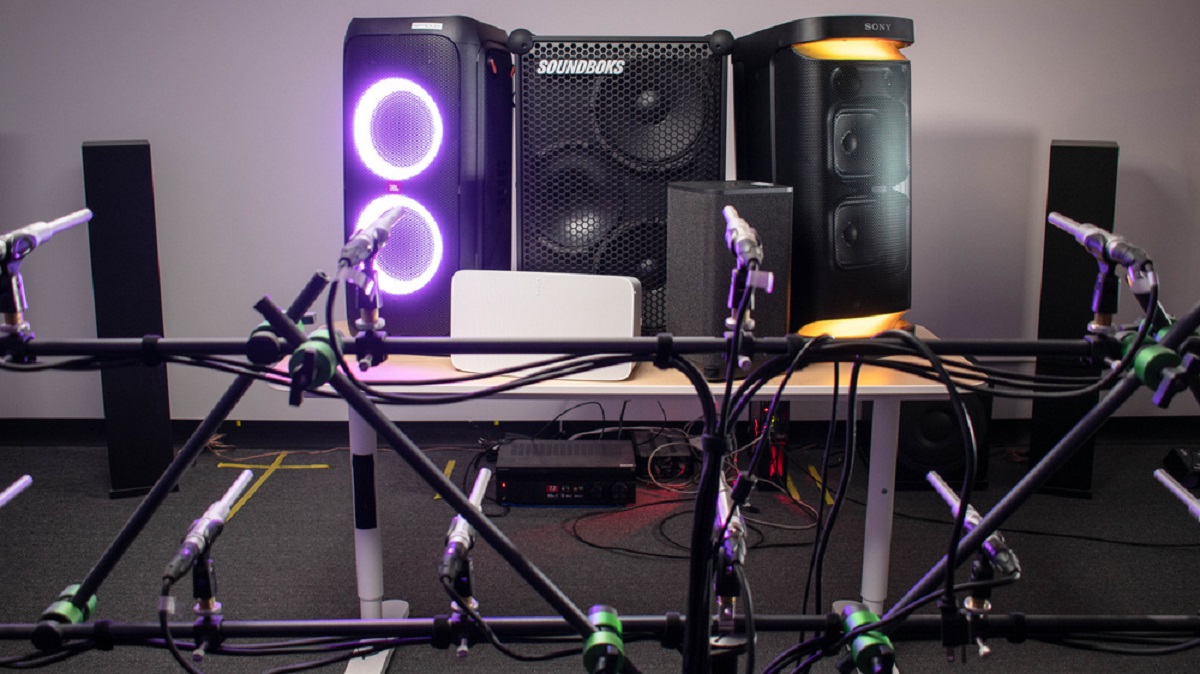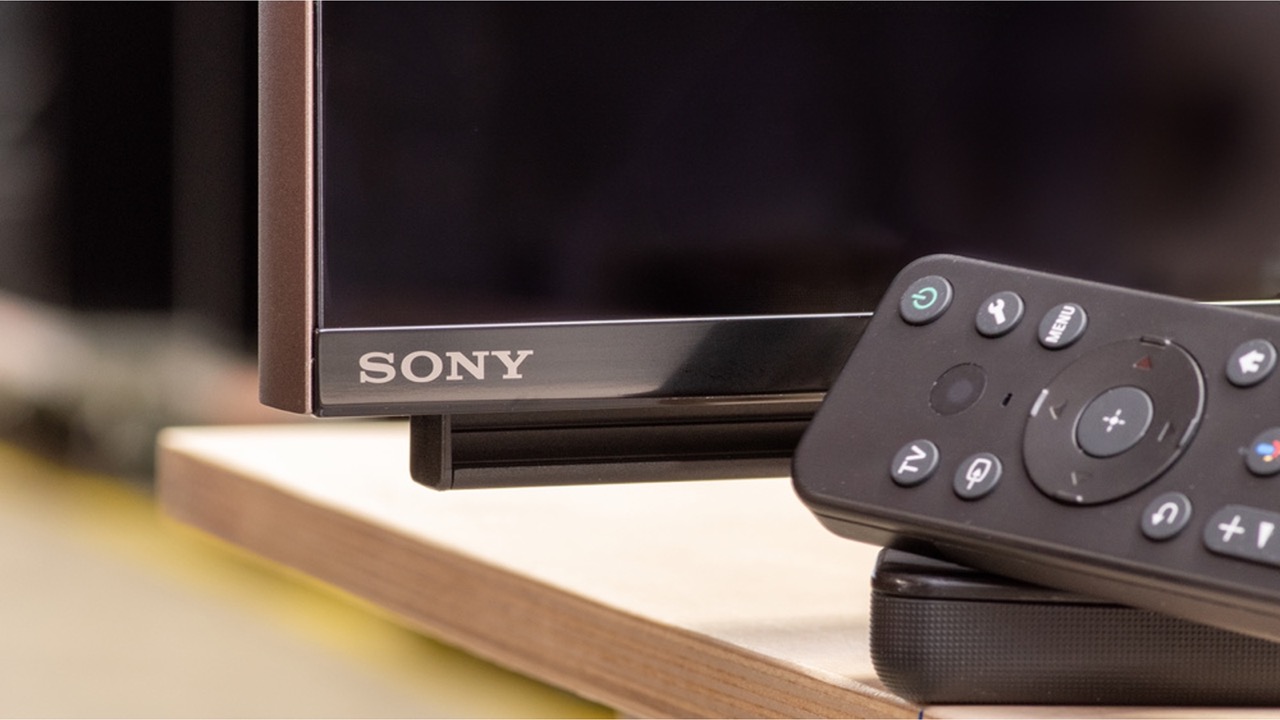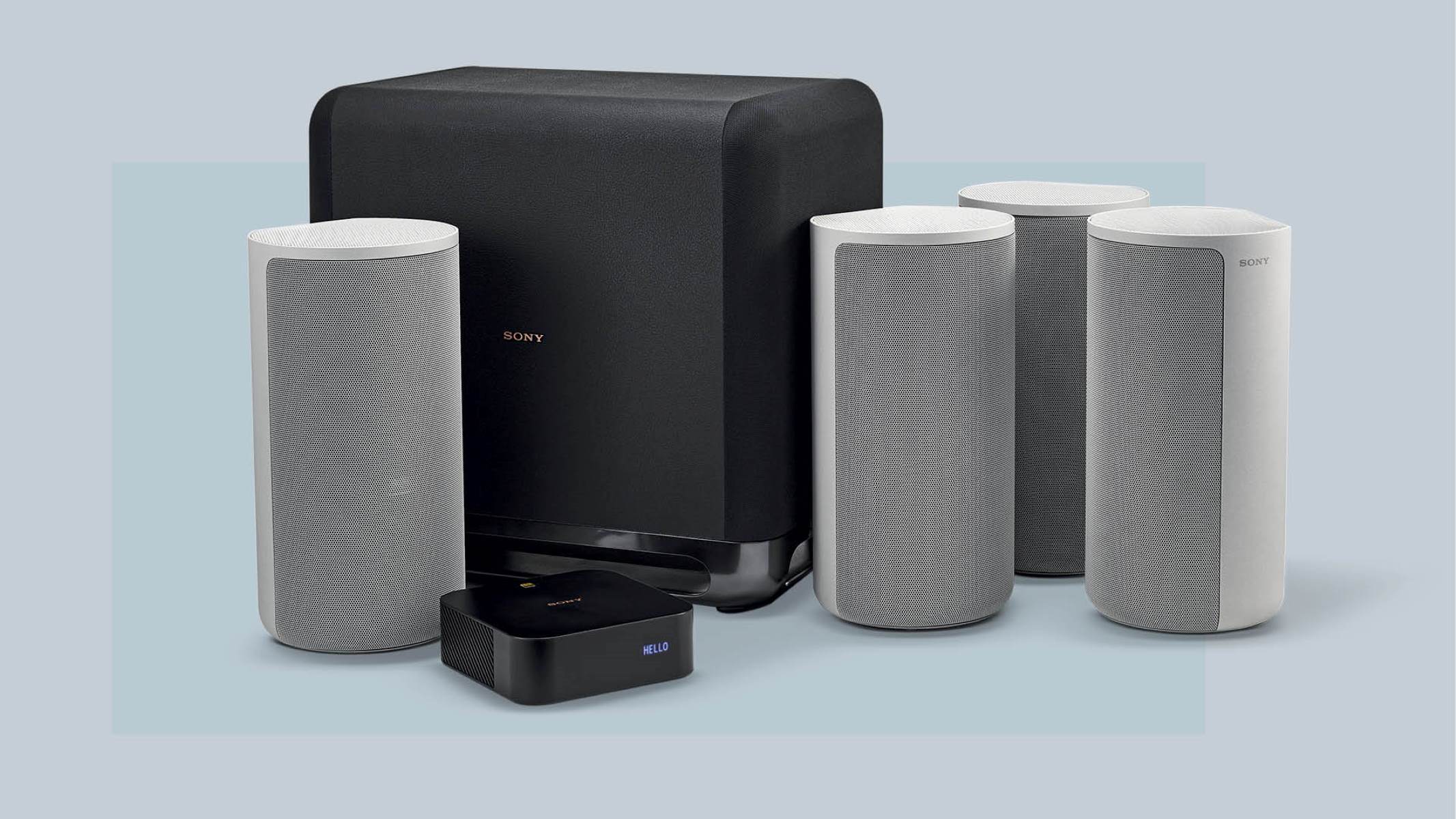Introduction
Welcome to the world of home entertainment! With advancements in technology, we are spoiled for choice when it comes to choosing the perfect setup for our viewing pleasure. Two popular options that often come up in discussions are LED TVs and home theater systems. Both offer unique features and benefits, but it’s important to understand the differences between them before making a decision.
An LED TV, or Light Emitting Diode Television, is a flat-panel display that uses LED backlighting technology. It offers a sleek and slim design with vibrant colors and high contrast ratios. On the other hand, a home theater system combines a high-definition display with a surround sound audio setup, creating an immersive cinematic experience in the comfort of your own home.
In this article, we will explore the key differences between LED TVs and home theater systems. Whether you are a movie enthusiast, avid gamer, or simply looking to enhance your entertainment setup, this guide will help you make an informed decision.
Let’s dive into the fascinating world of LED TVs and home theater systems and discover the features, benefits, and considerations associated with each option.
Definition and Basic Features
To understand the differences between LED TVs and home theater systems, let’s start with their definitions and basic features.
An LED TV is a flat-panel television that uses light-emitting diodes (LEDs) to illuminate the display. These LEDs are located behind the screen to provide lighting, resulting in better brightness, contrast, and energy efficiency compared to traditional LCD TVs. LED TVs are available in various sizes and offer high-definition (HD) and Ultra HD (4K) resolution options.
On the other hand, a home theater system is a multimedia setup that combines a large screen TV with a surround sound audio system. It aims to recreate the immersive experience of a movie theater within the confines of your home. A typical home theater system consists of a TV or projector, a media player, speakers, and an audio receiver.
When it comes to basic features, LED TVs offer impressive picture quality with sharp, vibrant colors and excellent contrast. They also come equipped with various smart features, such as built-in Wi-Fi, streaming apps, and voice control options. LED TVs are user-friendly, easy to set up, and offer a range of connectivity options like HDMI, USB, and audio output ports.
On the other hand, home theater systems focus not only on visuals but also on delivering immersive audio. They come with multiple speakers strategically placed around the viewing area to replicate the sensation of sound coming from different directions. Home theater systems offer various audio formats like Dolby Atmos and DTS:X, which further enhance the sound quality and provide a more immersive experience.
In summary, LED TVs are standalone devices that offer exceptional picture quality and smart features, while home theater systems combine a high-definition display with a surround sound audio setup for a more immersive cinematic experience at home.
Display Technology
The display technology used in LED TVs and home theater systems plays a crucial role in the visual experience they deliver.
LED TVs utilize LED backlighting technology, where light-emitting diodes are positioned behind the screen to generate the necessary illumination. This technology offers several advantages, including greater energy efficiency, enhanced brightness, and improved contrast ratios. LED TVs can produce deep blacks and bright whites, resulting in a more dynamic and immersive visual experience. Additionally, LED TVs provide a wider color gamut, allowing for more accurate and vibrant colors on the screen.
On the other hand, home theater systems can be versatile when it comes to display technology. They can be paired with various options, including LED TVs, OLED TVs, or even projectors. OLED (Organic Light Emitting Diode) technology is particularly popular among home theater enthusiasts. OLED TVs offer unparalleled picture quality with their self-illuminating pixels, providing true blacks, infinite contrast, and wide viewing angles. This results in stunning visuals with vibrant colors and exquisite details.
In the case of projectors, home theater systems can transform any wall or projection screen into a massive display. Projectors offer the advantage of customizable screen sizes, allowing you to create a cinematic experience tailored to your preferences. They can support different resolutions, including Full HD, 4K, and even 8K, providing incredible detail and clarity on the big screen.
Whether you choose an LED TV or a home theater system with OLED technology or a projector, it’s important to consider factors such as room size, ambient lighting conditions, and personal preferences to determine the best display technology for your home entertainment setup.
Screen Size and Resolution
When it comes to screen size and resolution, LED TVs and home theater systems offer different options to cater to various preferences and viewing requirements.
LED TVs are available in a wide range of screen sizes, starting from compact sizes of around 32 inches, all the way up to massive displays measuring 85 inches or more. The screen size you choose primarily depends on the size of your room and your viewing distance. It’s important to strike a balance between having a large enough screen to immerse yourself in the content and ensuring that you can comfortably view it without straining your eyes.
In terms of resolution, LED TVs offer different options to suit different needs. High-definition (HD) resolution, which is commonly found in many LED TVs, provides a crisp and clear picture with a resolution of 720p or 1080p. For even more detailed visuals, Ultra HD (4K) resolution is becoming increasingly popular. 4K resolution offers four times the pixel count of HD, resulting in sharper images and finer details. Some high-end LED TVs even boast 8K resolution, which provides an incredibly detailed and immersive viewing experience.
On the other hand, home theater systems offer flexibility in terms of screen size and resolution by allowing you to choose the display device that best suits your needs. Whether you opt for an LED TV, an OLED TV, or a projector, you have the freedom to select the screen size and resolution that align with your preferences.
Projectors, in particular, offer a significant advantage in terms of screen size flexibility. They can project onto a blank wall or a projection screen, allowing you to choose a custom screen size that can range from small to massive, depending on the available space and your desired viewing experience.
When selecting the screen size and resolution for your home entertainment setup, consider the viewing distance, the size of your room, and the level of detail you desire. This will ensure that you can fully enjoy the visual experience without any compromise.
Audio System
When it comes to creating a truly immersive home entertainment experience, the audio system plays a crucial role. Both LED TVs and home theater systems offer different options for audio setup.
LED TVs typically come with built-in speakers that provide decent sound quality. However, to truly elevate your viewing experience, you may want to consider connecting external speakers or a soundbar. External speakers or soundbars can offer improved clarity, better bass response, and a more immersive surround sound experience.
On the other hand, home theater systems are designed to deliver exceptional audio quality. They typically consist of multiple speakers strategically placed around the room to create a surround sound effect. This allows for a more immersive audio experience, where sound can be heard from different directions, just like in a movie theater.
Home theater systems come in various configurations, including 2.1, 5.1, 7.1, or even more channels. The numbers refer to the number of speakers and subwoofers in the setup. For example, a 5.1 system includes five satellite speakers and a subwoofer. These systems can recreate the cinematic audio experience, making you feel like you’re right in the middle of the action.
In addition to the speaker setup, home theater systems also support various audio formats such as Dolby Atmos, DTS:X, and others. These formats provide a more immersive soundstage, with audio object placement and movement adding an extra dimension to your viewing experience.
When choosing the audio system, consider the size of your room, your budget, and your audio preferences. If you’re looking for a more immersive and theatrical experience, a home theater system with a surround sound setup is the way to go. On the other hand, if you prefer simplicity and don’t require high-end audio, an LED TV with external speakers or a soundbar can still provide a satisfying audio experience.
Connectivity Options
Connectivity options are an important aspect to consider when comparing LED TVs and home theater systems. They determine how you can connect your devices, gaming consoles, and other peripherals to your entertainment setup.
LED TVs offer a wide range of connectivity options to accommodate various devices. Most LED TVs come equipped with HDMI (High Definition Multimedia Interface) ports, which allow you to connect devices like Blu-ray players, game consoles, and sound systems. The HDMI connection ensures high-quality audio and video transmission. Additionally, LED TVs often have USB ports, allowing you to connect external storage devices to access photos, videos, or music. Other connectivity options may include audio output ports, component inputs, and Ethernet or Wi-Fi connectivity for accessing online streaming services.
Home theater systems also provide multiple connectivity options to connect various devices. Whether you choose an LED TV, an OLED TV, or a projector, the connectivity options remain similar as they are independent of the display technology. Home theater systems typically have HDMI inputs and outputs to connect the TV or projector. This allows for seamless integration with external devices like Blu-ray players, gaming consoles, and media streamers. Additionally, home theater systems often have multiple audio input options, including optical, RCA, and HDMI ARC (Audio Return Channel) ports, ensuring compatibility with various audio sources.
When selecting your preferred connectivity options, consider the devices you plan to connect, their compatibility, and the flexibility you require in your entertainment setup. Ensure that the chosen option provides seamless connectivity and supports the audio and video formats you desire.
Both LED TVs and home theater systems offer a wide array of connectivity options, allowing you to create a versatile and interconnected entertainment setup to cater to your needs.
Price Range
Price is an important factor to consider when comparing LED TVs and home theater systems. The cost can vary depending on factors such as brand, size, features, and display technology.
LED TVs are generally more affordable compared to home theater systems. The price of an LED TV can vary depending on the screen size, resolution, and additional features. Smaller-sized LED TVs with HD resolution are usually more budget-friendly, while larger-sized models with 4K or 8K resolution and advanced features can be more expensive.
On the other hand, home theater systems typically involve more components and setup, which can increase the overall cost. The price of a home theater system can vary depending on the display device (such as an LED TV, OLED TV, or projector), the audio system configuration, and the quality of the components. Higher-end home theater systems with larger screens, high-resolution displays, and top-of-the-line audio equipment tend to be more expensive.
It’s important to define your budget and consider your priorities when deciding between an LED TV and a home theater system. LED TVs are a more budget-friendly option that still offers a great visual experience, while home theater systems provide a more immersive audiovisual experience at a higher price point.
Ultimately, the price range is subjective and depends on your specific requirements, preferences, and budget.
Setup and Installation
The setup and installation process varies between LED TVs and home theater systems. Let’s explore the key aspects associated with each option.
LED TVs are relatively straightforward to set up and install. They come with a stand or wall-mounting brackets, allowing you to choose the most suitable placement. Once the TV is securely in place, you need to connect it to a power source and any additional devices, such as a cable/satellite box or a soundbar. LED TVs typically have an on-screen setup wizard that guides you through the initial configuration, including connecting to your Wi-Fi network and basic settings adjustments. The process is user-friendly and can usually be completed within a few minutes.
Home theater systems, on the other hand, involve a more complex setup process. The components of a home theater system, including the TV or projector, speakers, audio receiver, and media players, need to be connected properly to ensure optimal performance. You may need to position the speakers strategically around the room, considering factors like distance, angle, and height for the best audio experience. Home theater systems often require running speaker wires and setting up calibration procedures to achieve the desired sound quality. While the setup process might be more involved, many home theater systems come with detailed instructions and online resources to assist you in setting up your system correctly.
It’s worth noting that the setup and installation process for home theater systems can be more time-consuming and may require some technical knowledge. If you don’t feel comfortable with the setup process, you may consider hiring professional installers who specialize in home theater systems to ensure optimal performance and convenience.
LED TVs offer a simpler and more user-friendly setup process, while home theater systems require more careful consideration and technical expertise. The choice between the two depends on your willingness to invest time and effort into the setup process and your preference for a more immersive audiovisual experience.
Entertainment Experience
When it comes to the entertainment experience, both LED TVs and home theater systems offer unique advantages that cater to different preferences and viewing needs.
An LED TV provides a visually stunning experience with its vibrant colors, sharp details, and impressive contrast. LED TVs have advanced over the years, offering high-definition (HD) and Ultra HD (4K) resolutions that bring movies, TV shows, and games to life with incredible clarity. LED TVs also often come with smart features and apps, allowing you to stream content from popular platforms like Netflix, Hulu, and Amazon Prime Video. These features, combined with the convenience of a compact and sleek design, make LED TVs a popular choice for casual viewing and everyday entertainment.
On the other hand, a home theater system provides a more immersive and cinematic entertainment experience. With a larger screen size, surround sound capabilities, and advanced audio technology, home theater systems transport you into the heart of the action. The combination of a high-definition display, such as an LED or OLED TV, or a high-quality projector, along with a surround sound audio setup, creates a captivating experience for watching movies, sports events, or playing video games. The enveloping sound and larger-than-life visuals make you feel like you’re right in the middle of the action, enhancing the overall enjoyment of your favorite entertainment.
Both LED TVs and home theater systems have their advantages, and the choice ultimately depends on your viewing preferences, available space, and budget. If you prefer a more compact and versatile setup for casual viewing, an LED TV might be the right choice. However, if you crave a more immersive and theater-like experience, a home theater system is the way to go.
Consider your priorities and how you envision your entertainment experience to select the option that best suits your preferences and lifestyle.
Conclusion
Choosing between an LED TV and a home theater system depends on several factors, such as your budget, space availability, desired entertainment experience, and personal preferences. Let’s recap the key points to help you make an informed decision.
An LED TV offers a sleek and compact design, vibrant colors, and high-definition or even 4K resolution. It is a more affordable option that provides a visually stunning and convenient entertainment experience. LED TVs come with various smart features and connectivity options, making them suitable for everyday viewing and streaming from popular platforms.
On the other hand, a home theater system offers a more immersive entertainment experience. With a larger screen size, surround sound capabilities, and advanced audio technology, it recreates the cinematic atmosphere in your own home. Home theater systems combine the visual impact of an LED or OLED TV, or a projector, with a surround sound audio setup for a captivating and theater-like experience.
Consider your preferences and priorities when choosing between the two options. If you value convenience, affordability, and versatility, then an LED TV might be the ideal choice for you. However, if you seek a more immersive, theater-like experience with impressive audiovisual capabilities, then a home theater system is worth considering.
Remember to factor in your budget, available space, and the level of complexity involved in the setup and installation process. You may also want to evaluate future expansion possibilities, as home theater systems offer greater scalability compared to standalone LED TVs.
Ultimately, the decision between an LED TV and a home theater system is a personal one that depends on your individual preferences and requirements. Whether you prefer the simplicity and convenience of an LED TV, or the immersive audiovisual experience offered by a home theater system, both options can provide hours of entertainment and enhance your home viewing experience.
We hope this guide has shed some light on the differences between LED TVs and home theater systems, allowing you to make an informed decision that aligns with your unique needs and preferences.







